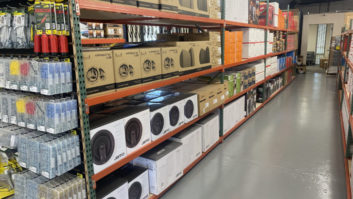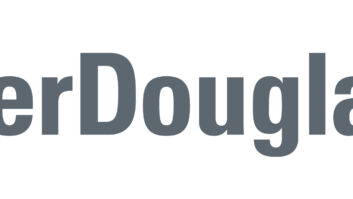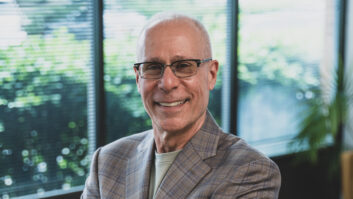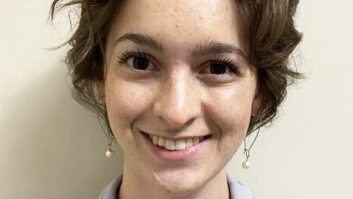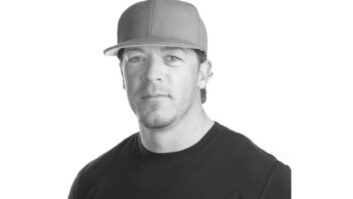NEW YORK — CE industry: Meet one of your fastest growing audiences. Their population grew by 15 percent over the last decade. They will continue to swell in numbers over the next two decades by 31 percent. They expand their ranks by 10,000 new members every single day. They are senior citizens, Americans older than 65.
As a country, the U.S. is getting older, fast. The baby boom that exploded the country’s population immediately following World War II is now reaching retirement age. What they are also doing is living longer, living more active lifestyles, and, increasingly, turning to technology to improve the quality of their later years.
With one in eight Americans now older than 65, “it’s an incredibly interesting market to be in,” said Carsted Trads, president of Clarity, the division of Plantronics that markets home phones and devices for the elderly and impaired. “Seniors are not the same type of people that turned 65 twenty years ago. Retirement age used to be when you prepared your will. Now it’s when you take up yoga. We at Clarity saw a clearly underserved market, as seniors seek to live a decent, independent life.”
Trads made the point that seniors are not only more active but also more technologically savvy than earlier generations. “Many hitting retirement age are very comfortable with technology. They used it in the workforce for decades — computers, cellphones … they email their grandchildren.”
Many industries have noticed this trend and have reacted.
Clarity is a member of The Aging Technology Alliance (AgeTek), an organization formed at International CES in 2011 whose mission is to “promote the awareness, benefits and value of products and services for our aging society while directly benefiting our members by evolving into the world’s leading aging-focused technology consortium.”
AgeTek has more than 60 member companies ranging from technology product suppliers such as Dakim and Telikin to advocacy groups such as AARP and the National Council On Aging.
One of the main goals of AgeTek is to create a consumer universe that will allow seniors to remain in their own homes safely and live independently as they age. According to AARP, the average cost of an extended-care facility resident is around $50,000 a year and climbing. Many seniors who enter these facilities have their savings, or their loved ones’ savings, wiped out completely. About two-thirds of them rely on Medicare to pay for their stay, putting further strain on the Federal program that many in politics believe is on an unsustainable path of growth.
AgeTek member companies offer a universe of technology products designed to facilitate senior independent living. These include home-monitoring systems, medicine dispensers, one-button communication systems and emergency-response devices.
Beyond that, there is a wide variety of traditional CE devices that have been simplified or modified for senior use: smartphones with simpler menus, home phones with large buttons and captioning capabilities, tablet devices with built-in cognitive- skills-building apps, even products as simple as a TVwatching headset for the hearing impaired.
Another sector of the CE market with its sights set on the aging population is the mobile health care device industry, which is expected to generate about $5.7 billion in yearly revenue by 2015, according to a Parks Associates study.
Growth will come in three primary segments of the mobile market: chronic-care monitoring; in-home facilitation such as medications management; and wellness and fitness apps and programs, collectively known as mHealth.
The evolution of mHealth technologies is considered a winwin by the health care industry, as simple apps that drive biometric recording devices — such as glucose, heart rate and blood pressure monitors — should lead to fewer unnecessary doctor visits, which in turn reduces costs and increases efficiency, among other pluses. And the market is in its infancy.
Research2Guidance analyst Patrick Houck noted, “With the growing sophistication level of mHealth apps, 84 percent of the total app market revenue (estimated at $10.2 billion by 2018) will come from related services and products such as sensors.”
What puzzles some industry observers is the lack of a concerted effort on the part of traditional CE retailers to reach the senior market. While a number of websites, including AgeTek’s and AARP’s, do a decent job of compiling some of the technology available, Clarity’s Trads sees a lack of commitment from traditional brick-and mortar stores.
“Many of these products need to be seen to be understood, and they should be marketed not to seniors, but to loved ones and caregivers,” he said. “Retailers are missing a golden opportunity to curate and display these products together, and demonstrate how they interact.”
Sounds like a good idea for an end-cap. A sampling of some CE products aimed at easing senior living, appears here.





